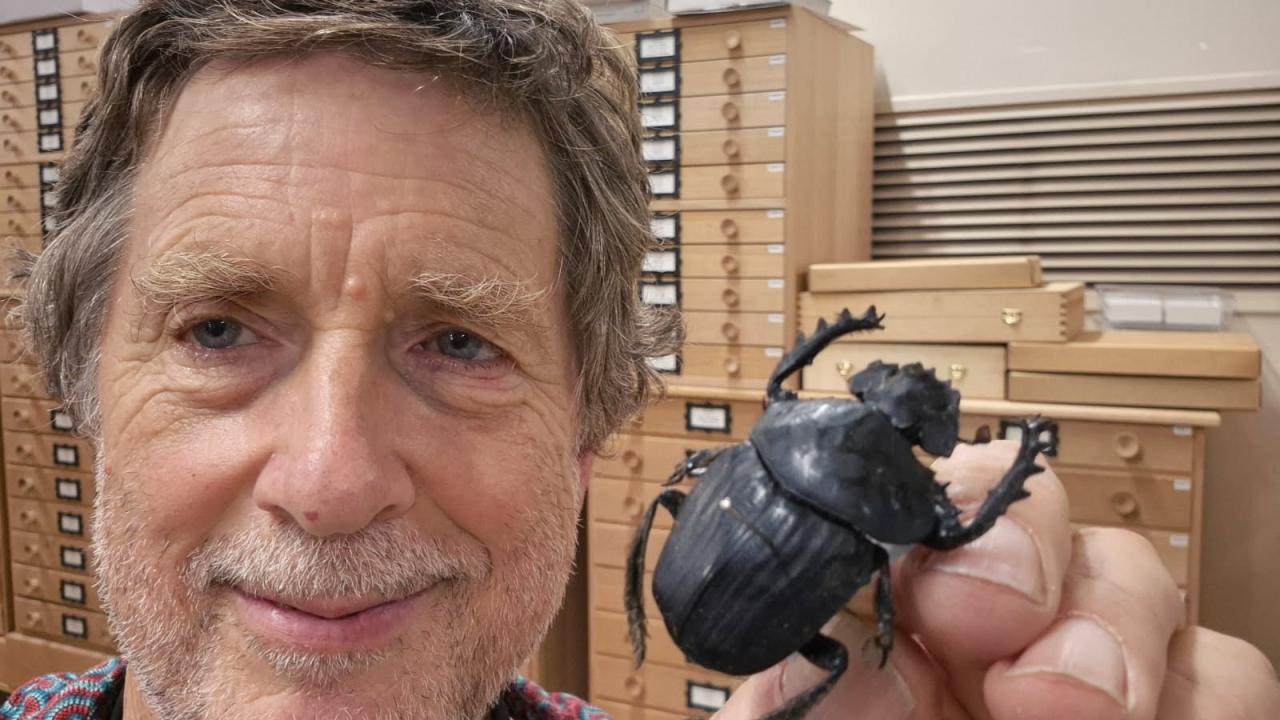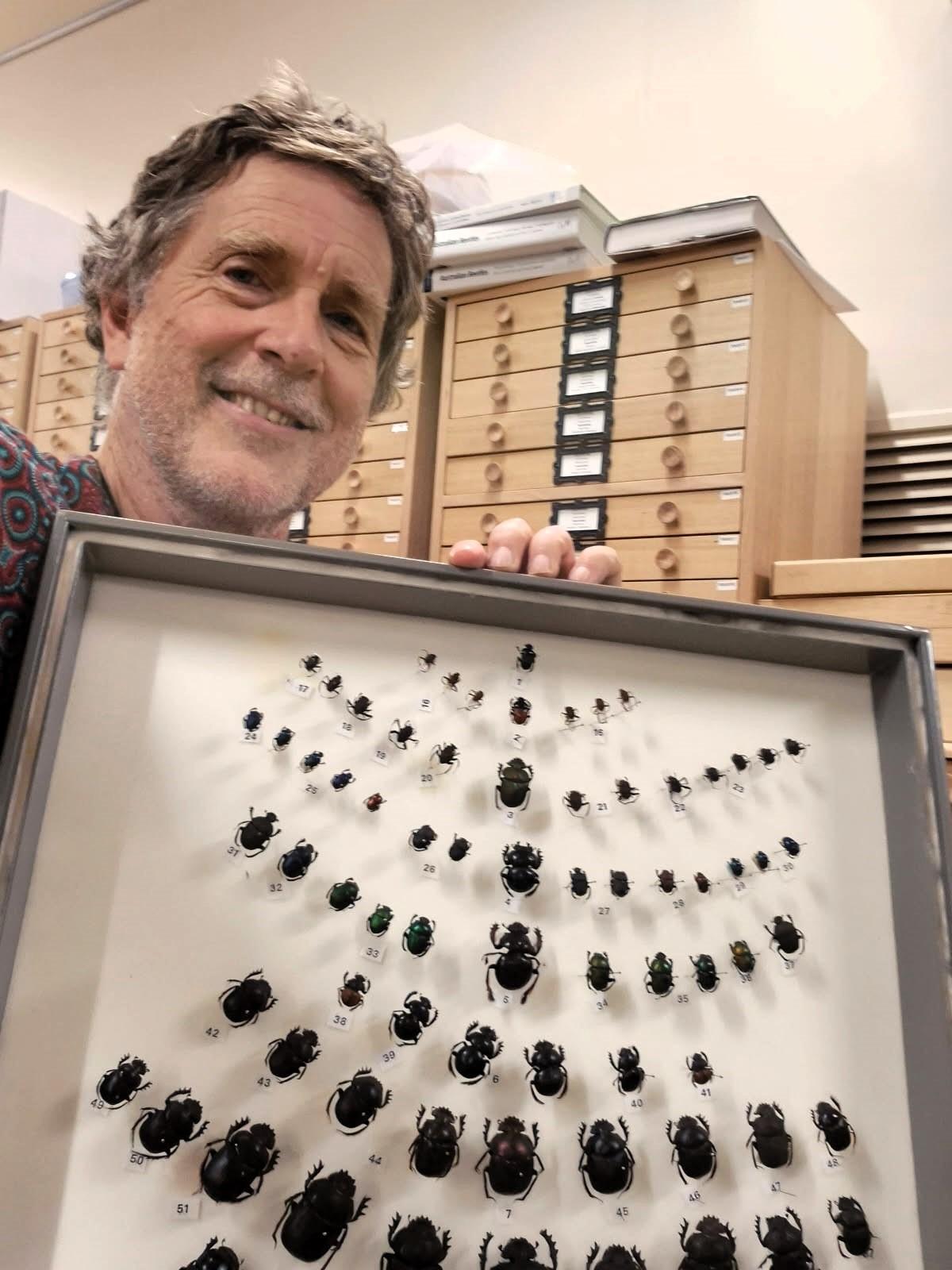Dung beetles no longer unsung heroes of the paddock

At the heart of a new exhibition at the Tasmanian Museum and Art Gallery in Hobart is the work of George Bornemissza (1924–2014), a pioneering entomologist whose introduction of dung beetles to Australia revolutionised pasture management and reduced bushfly populations.
The World of Beetles exhibition celebrates the incredible diversity, beauty, and scientific importance of beetles and the dung beetle, a farmer’s best friend, is featured among some of the most striking beetles from across the globe.
Senior curator of invertebrate zoology at the museum’s Collections and Research facility Dr Simon Grove said that there is a whole drawer full of dung beetles on display and while they might not be the prettiest beetles they are probably the most important to Tasmanian farmers.
“George had the job, assigned by CSIRO, to travel the work and find dung beetles that could cope with breaking down the growing amount of cattle and sheep dung here in Australia,” he said.
“We have a native dung beetle, but it’s not adapted for that sloppy dung, only the dry, fibrous stuff wallabies and wombats produce because they eat a different food source.
“The introduced dung beetles, mostly found in Africa and Eurasia, do a much better job of decomposing a cow pat, for instance, and recycling the nutrients back into the ground.”

Australian livestock produces about 80 million tonnes of dung a year, which can take months to break down and results in a large portion of pasture surfaces not being grazed efficiently.
“Before we had dung beetles the manure just used to lay and dry in the sun and make pasture unproductive.
“Basically the dung beetles process the dung and removes it before the flies get to it.”
Other benefits include sequestering carbon into the soil, assisting producers to reduce emissions, improving soil health in grazing systems and reducing the spread of diseases and insect pests, including flies and parasites.
Four introduced species are used in Tasmania which target dung at various times of the year.
“If you kick over a cow pat you’re likely to see them, unless you’re using Ivermectin or similar,” Dr Grove said.
To study the dung beetles and other wonders of beetle biodiversity up close and beautifully displayed, The World of Beetles is open now and closes on July 27.




Add new comment